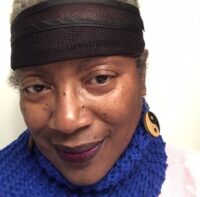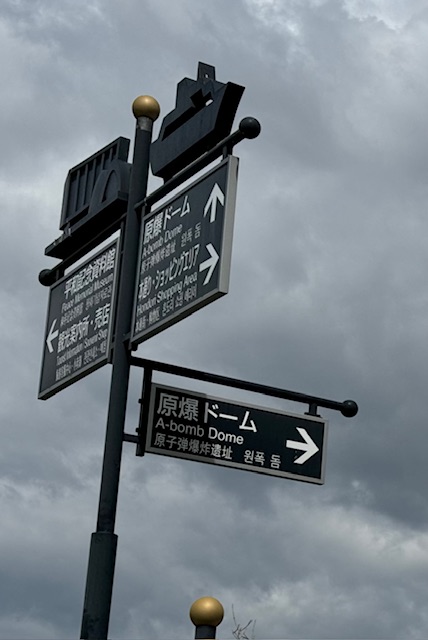Street signs point the way to Hiroshima landmarks.
I met an amazing woman at a guesthouse in Toyohama near Unpen-ji. The temple is located on a mountain accessed by visitors and ohenro via a ropeway. She was meeting friends who were on the pilgrimage.
I ran into the friends at a couple of temples on the path. They were also staying at the guesthouse. Not on the trail, she was meeting them at the temple. Another goal was completing her mother’s memory/stamp book with images of temples on Shikoku. To me, she personified what I believe is a demonstration of one good year.
The woman grew up in Hiroshima, where her mother still lives. After working in the U.S., she seemed to be enjoying the fruits of her labor. I mentioned that Naoshima was a place that I wanted to see. She urged me to visit Hiroshima, too. We had an interesting conversation about Hiroshima and Miyajima, which are both on my list of places to visit in Japan after my pilgrimage.
I promised that I would make my best effort to do just that.
And here I am in Hiroshima.
Hiroshima
I took a bus and train to Hiroshima. At very first sight, I was impressed that the city is a… city. It is vibrant, full of busy people doing what people do in every city in the world. It was unapologetically Hiroshima.
I felt good about that.
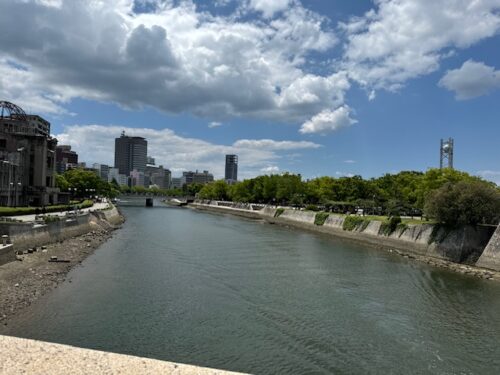
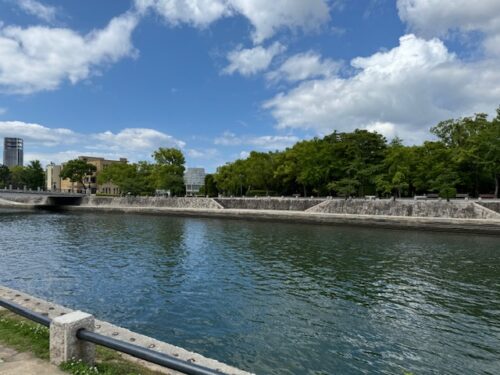
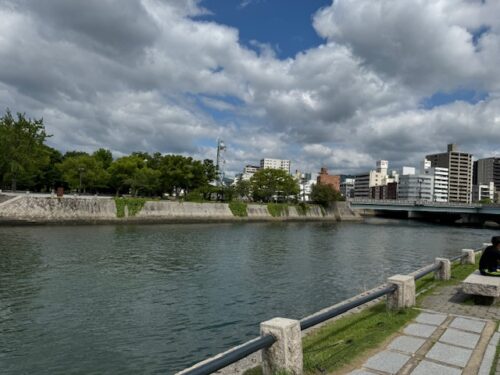
As I walked, I had to get my thoughts together about the history of the city. It is a modern place that has eased into the 21st century.
A-bomb Dome
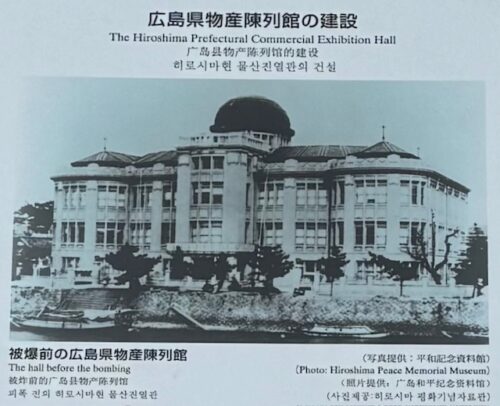
Of thousands of others, nearer the centre of the explosion, there was no trace. They vanished. The theory in Hiroshima is that the atomic heat was so great that they burned instantly to ashes – except that there were no ashes.
– Wilfred Burchett
The Hiroshima Prefectural Commercial Exhibition Hall was completed in 1915. It was designed by Jan Letzel, a Czech architect. The hall had a distinctive green dome and soon became a beloved landmark. It was used for exhibitions, fairs, and cultural events.
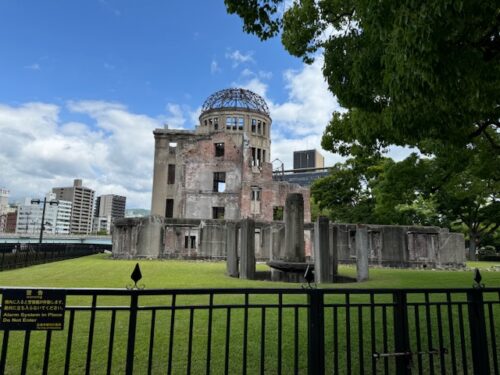
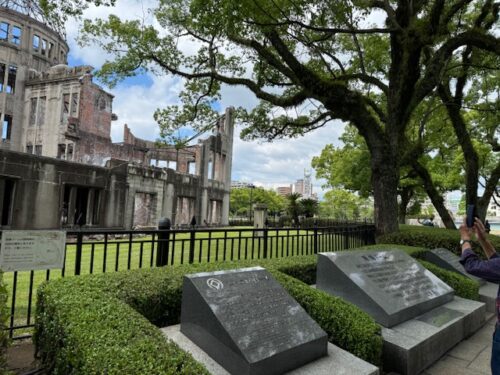
At 8;15 am, on August 6, 1945, an American B29 bomber carried out the world’s first atomic bombing. The bomb exploded approximately 600 meters and 160 meters southeast of the Hall, ripping through and igniting the building, instantly killing everyone in it.
Because the blast struck from almost directly above, some of the center walls remained standing, leaving enough of the building and iron frame recognizable as a dome. After the war, these dramatic remains came to be known as the A-bomb Dome.
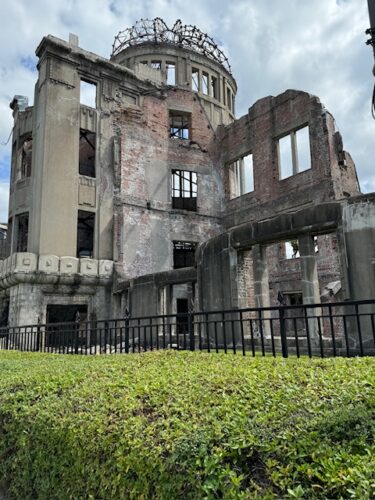
For many years, public opinions about the dome remained divided. Some felt it should be preserved as a memorial to the bombing, while others thought it should be destroyed as a dangerously dilapidated structure evoking painful memories.
As the city was rebuilt and other A-bombed buildings vanished, the voices calling for preservation gathered strength. In 1966, the Hiroshima City Council passed a resolution to preserve the A-bomb dome, which led to a public fundraising campaign to finance the construction work,
Preservation
Donations poured in with wishes for peace from around Japan and overseas, making the first preservation project possible in 1967. Several preservation projects have since been carried out to ensure that the dome will always look as it did immediately after the bombing.
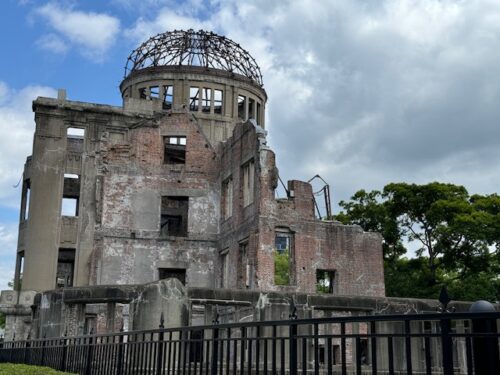
In December 1996, the A-bomb Dome was registered on the World Heritage List as a witness conveying the horror of the first use of a nuclear weapon, and as a world peace monument appealing continually for lasting peace and abolition of such weapons.
To help protect the dome, the national government designated the area around it as a historic site under the Cultural Properties Protection Act, with a larger area in and around Peace Memorial Park set aside as a buffer zone.
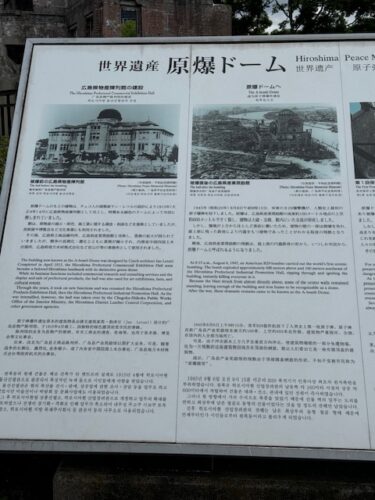
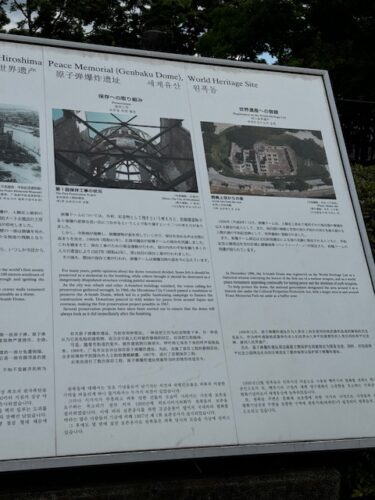
(Source of information for the A-bomb Dome in this post is this placard that stands in front of the structure on the promenade facing the river.)
Taking it all in
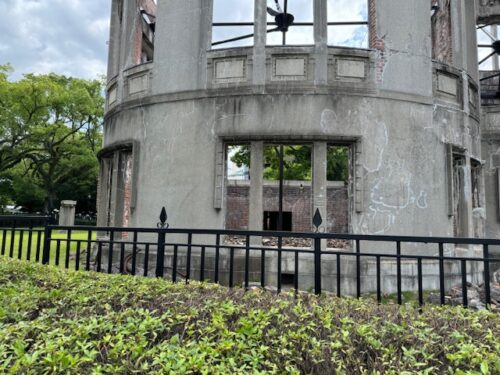
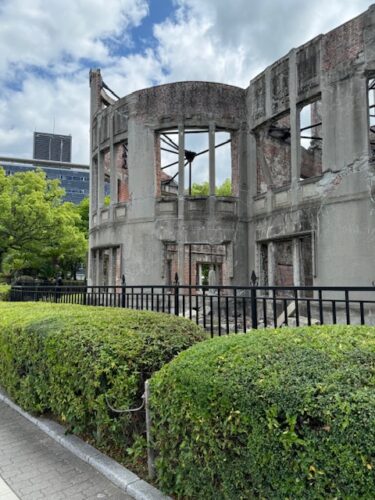
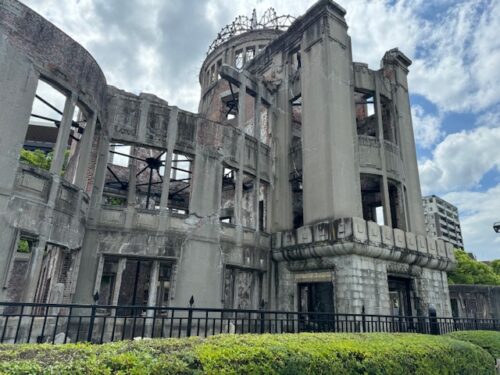
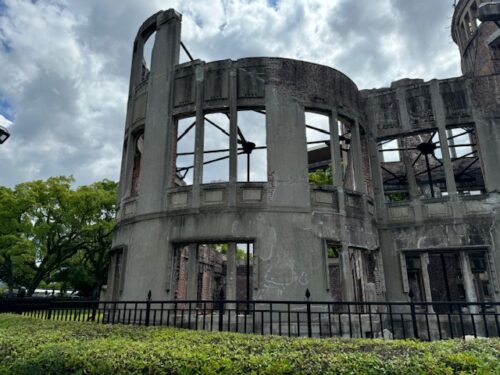
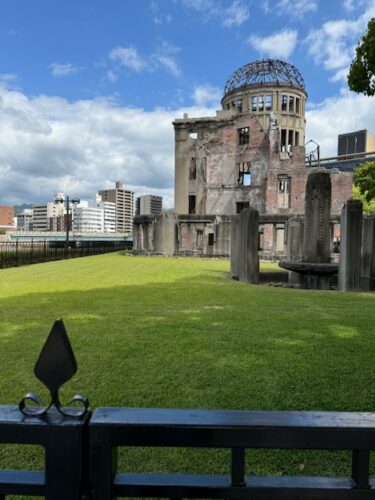
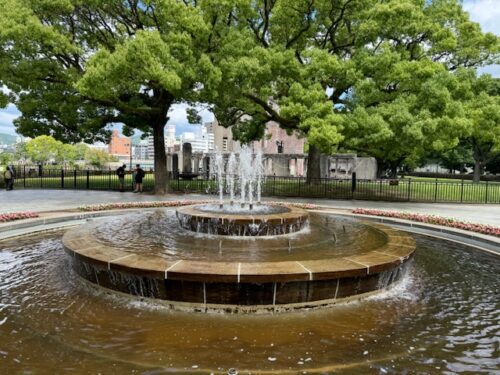
Peace Bell
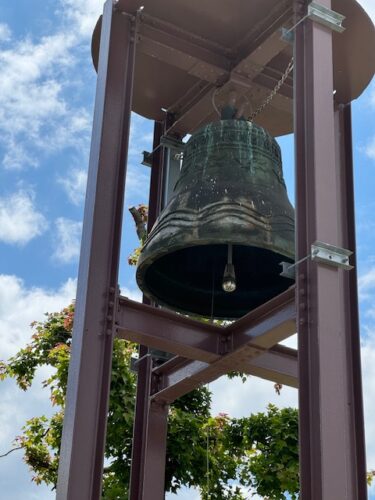
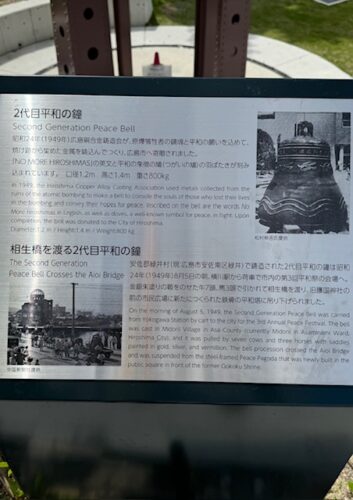
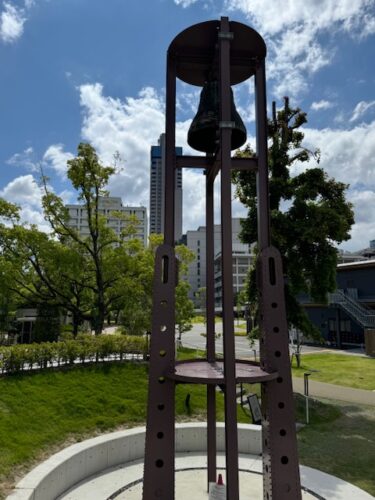
Second Generation Peace Bell on the Peace Pagoda.
In 1949, metals from the ruins of the atomic bombing were used to make a bell to console the souls of those who lost their lives and convey hopes for peace.
Inscribed on the bell is No More Hiroshimas in English, as well as doves, a well-known symbol of peace, in flight.
On the morning of August 5, 1949 the bell was carried from the maker to the city for the 3rd Annual Peace Festival. It was pulled by seven cows and three horses with saddles painted in gold, silver, and vermillion. It was suspended from the steel framed Peace Pagoda that was newly built in the public square in front of the former Gokoku Shrine.
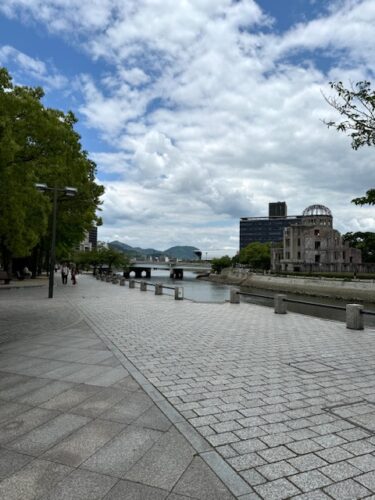
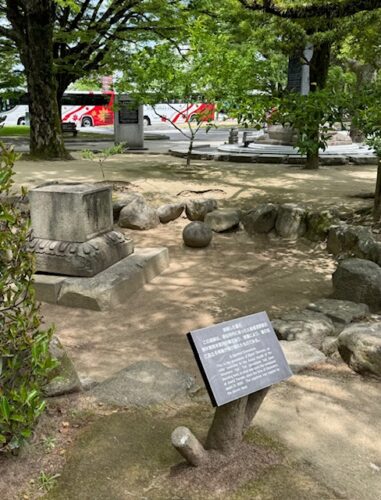
A-bombed gravestone of Kunai Okamato, an elder councilor to the Asanô House of the Hiroshima Fief. It has been standing here, in what was once the compound of the Jisenji Temple, since the time of Okamoto’s death in 1689. The capstone was toppled by the atomic blast.
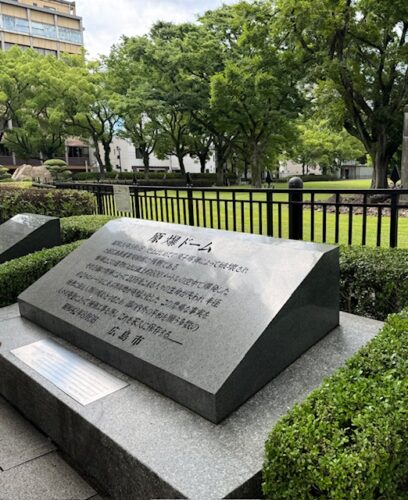
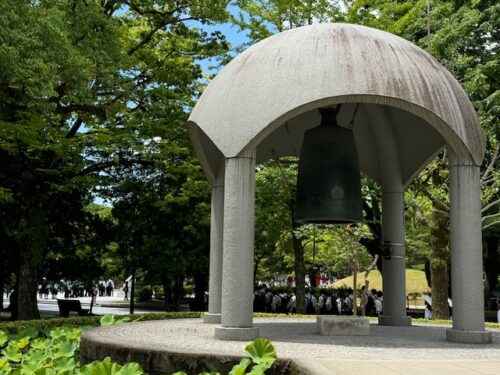
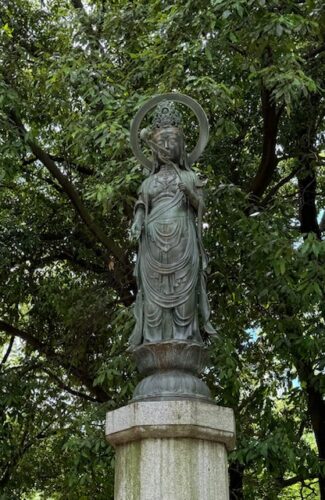
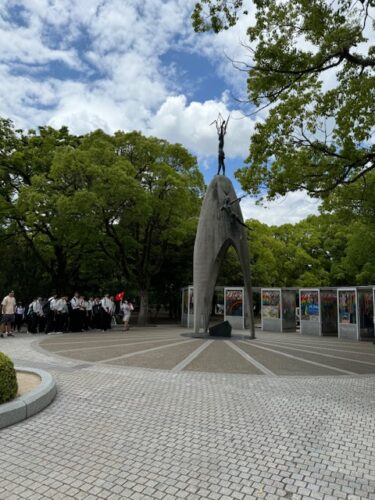
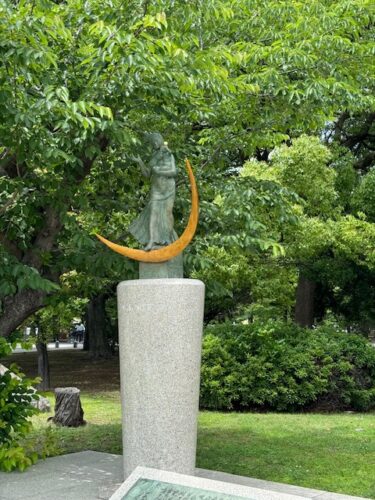
The Children’s Peace Monument stands in memory of all the children who died as a result of the atomic bombing of Hiroshima.

The top of the bronze statue is of a young girl lifting a golden crane entrusted with dreams for a peaceful future. The inscription reads: “This is our cry. This is our prayers. For building peace in this world.” School children were singing in front of the monument when I passed by.
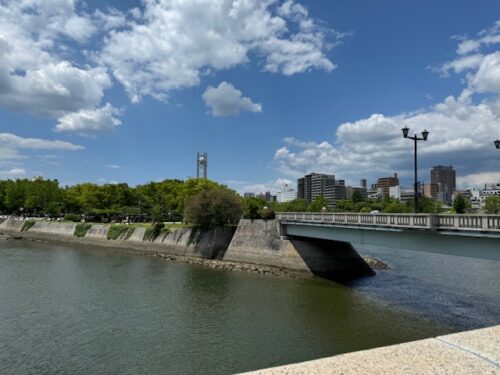

Hiroshima National Peace Memorial Hall
The Hiroshima National Peace Memorial Hall for the Atomic Bomb Victims.
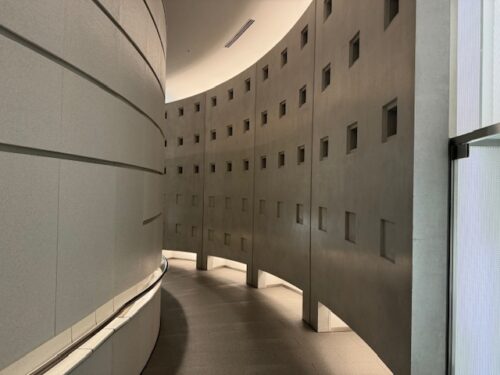
The facility enables survivors, victim’s relatives and friends to add information to the archives. The information is used to identify people who died or are missing.
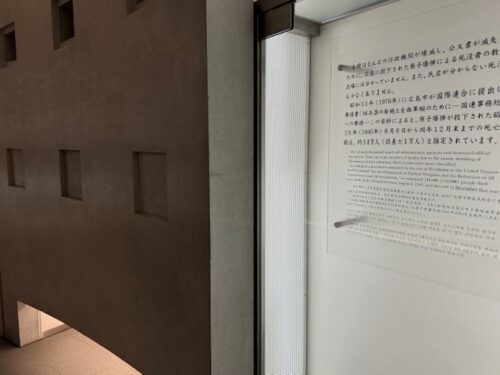
Films, testimonials, ephemera, uniforms, historical records and other items give visitors a realistic and emotional view of the war years.
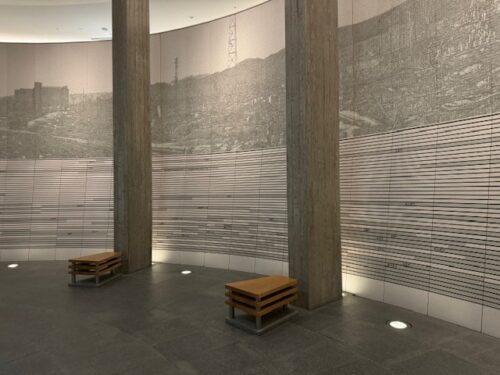
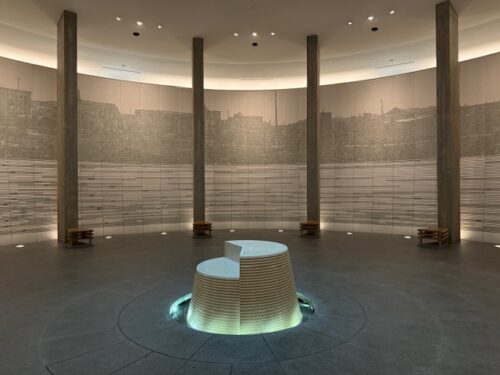
Inside the museum is an art piece that depicts the time – 8:15 am – of the bomb’s impact on the city.
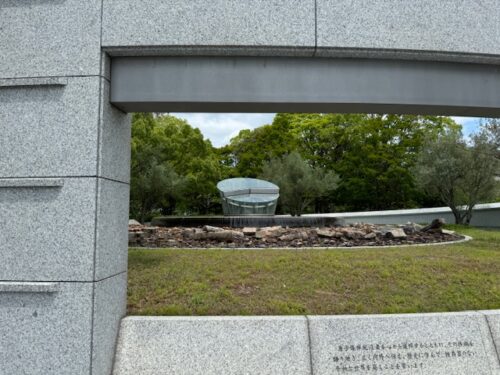
Outside in the courtyard is another sculpture showing the time – 8:15 am – when the bomb struck.
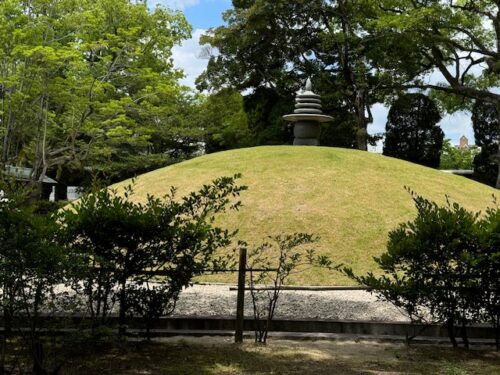
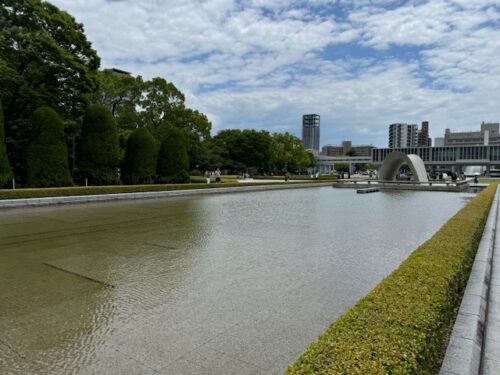
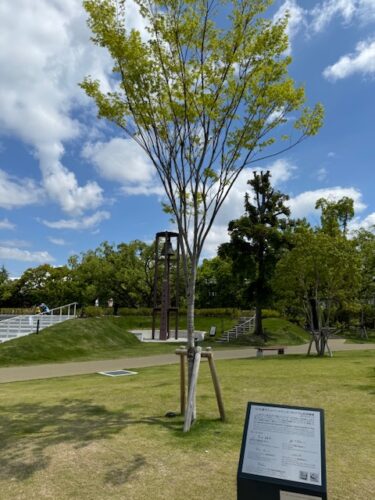
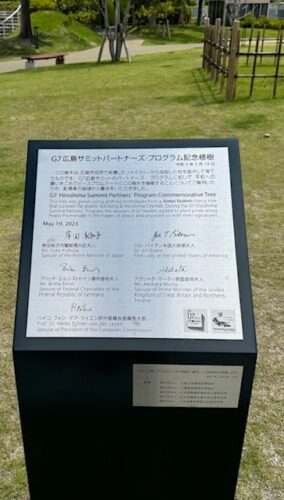
This tree was grafted from a Somei Yoshino cherry tree that survived the atomic bombing at Hiroshima City Hall. Spouses that attended the G7 Hiroshima Summit in 2023 provided their signatures including Dr. Jill Biden designating it as a commemorative tree along the Peace Promenade in the hopes of peace.
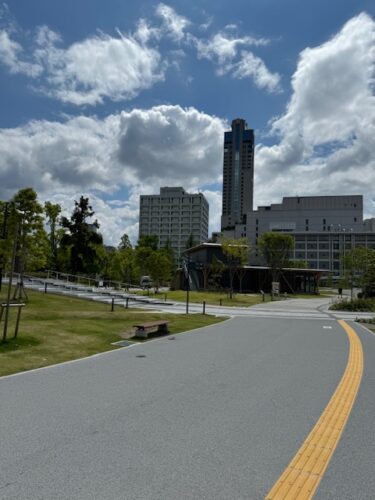

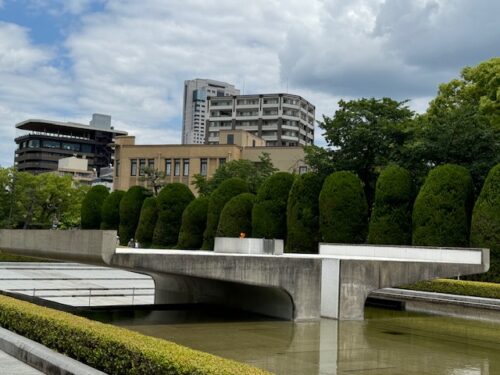
Eternal Flame Monument.
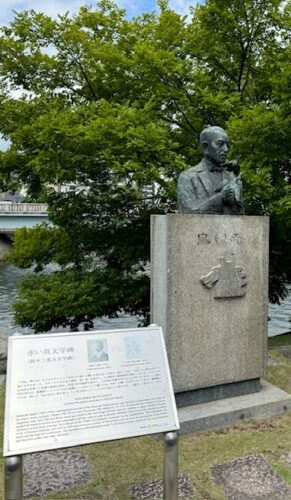
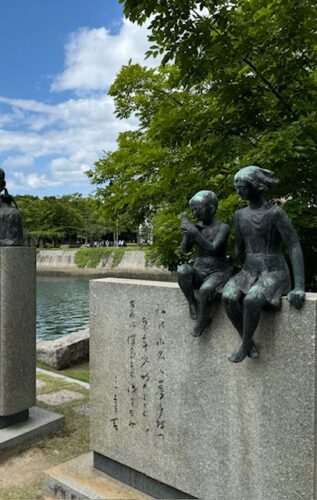
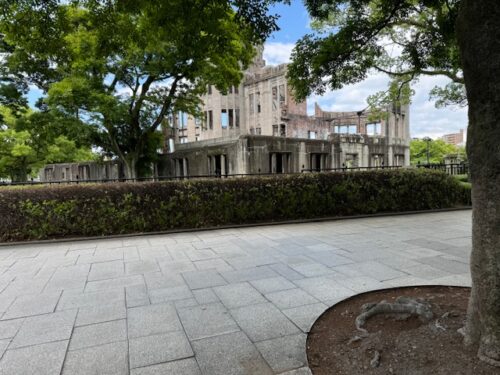
I was sitting on a bench at the Bridge of Peace when a man and woman stopped to talk with me.
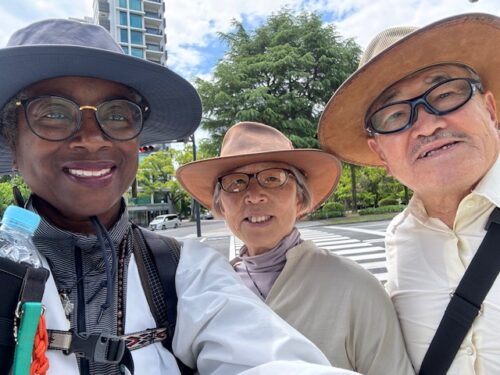
Final thoughts
World peace will not be achieved by drift or default. The goal must be defined,
the approaches must be accepted,
the responsibilities must be fixed.
– Norman Cousins
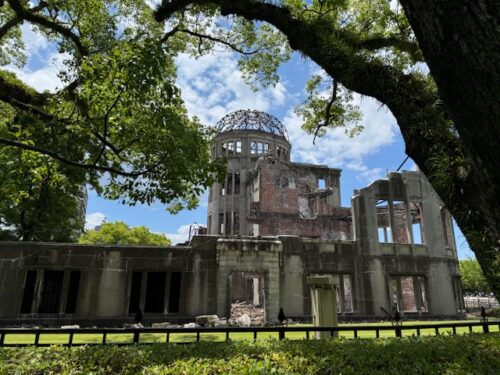
The Peace Park dominates the economic landscape of the city. There are references to the A-bomb Dome and park everywhere.
We stand here, in the middle of this city, and force ourselves to imagine the moment the bomb fell. We force ourselves to feel the dread of children confused by what they see. We listen to a silent cry. We remember all the innocents killed across the arc of that terrible war, and the wars that came before, and the wars that would follow.
Mere words cannot give voice to such suffering, but we have a shared responsibility to look directly into the eye of history and ask what we must do differently to curb such suffering again. Someday the voices of the hibakusha will no longer be with us to bear witness. But the memory of the morning of August 6th, 1945 must never fade. That memory allows us to fight complacency. It fuels our moral imagination. It allows us to change.
– Barack Obama, Hiroshima Peace Memorial, May 27, 2016
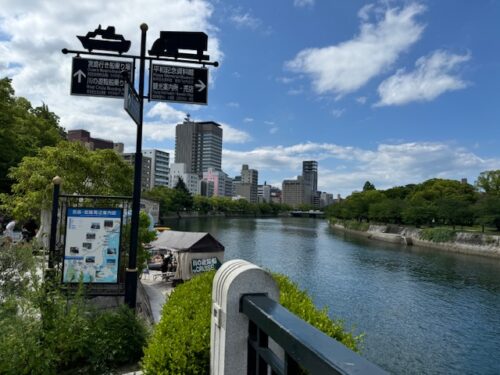
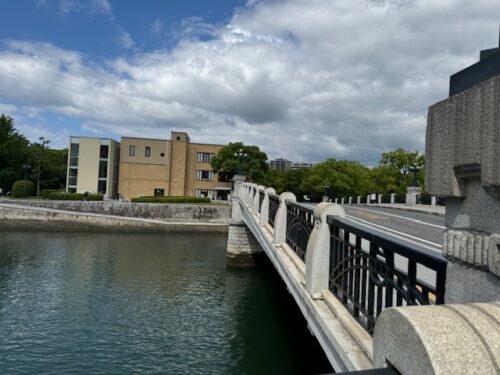
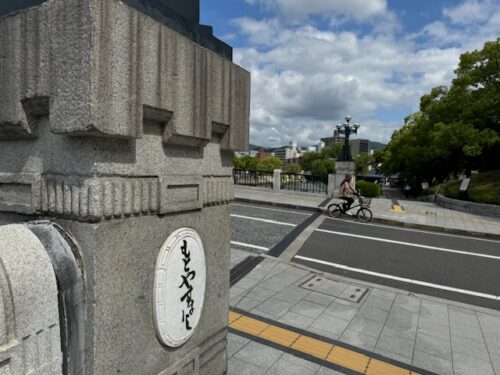
I walked through the city to clear my mind, finally making my way back to the hotel.
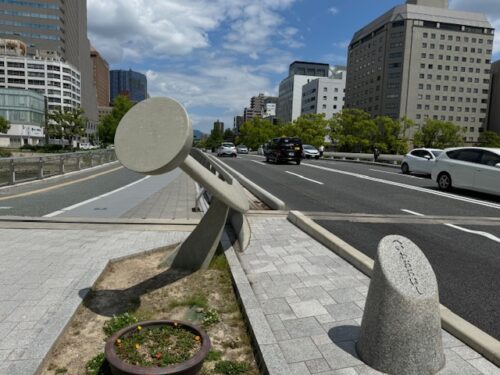
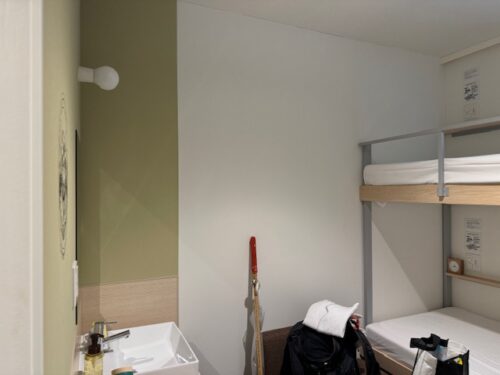
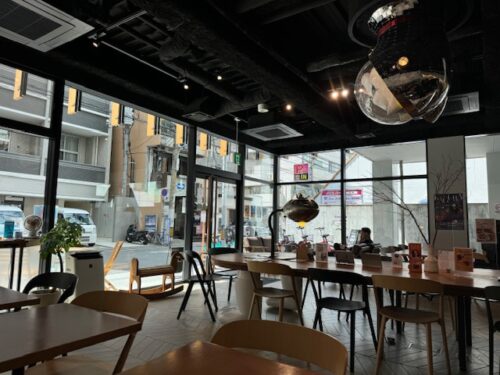
See you next time.
Baadaye and Mata Ne (またね)
Shirley J ♥️
This and several posts chronicle my own pilgrimage in Japan where I am walking the 1200 kilometer-long Shikoku 88 temple pilgrimage and beyond. Read my announcement here.
